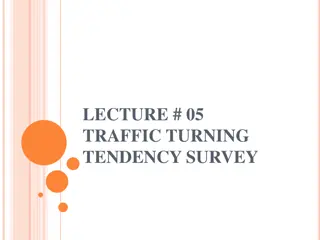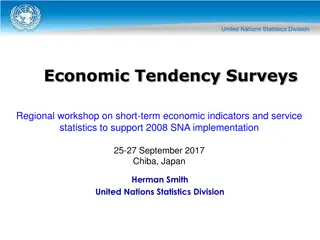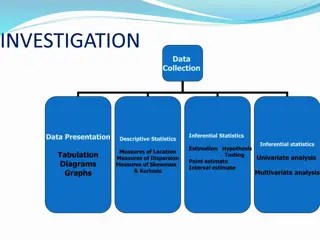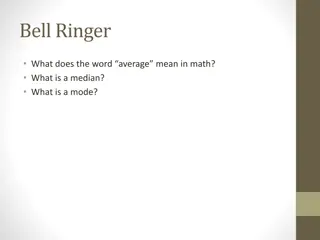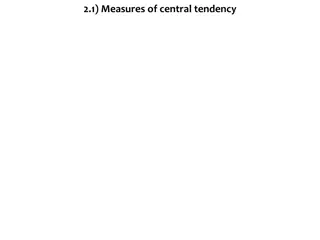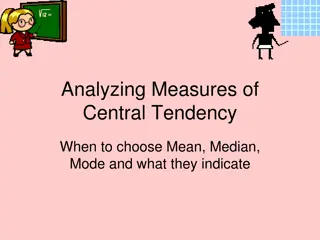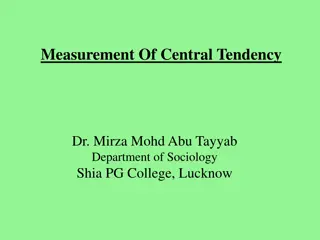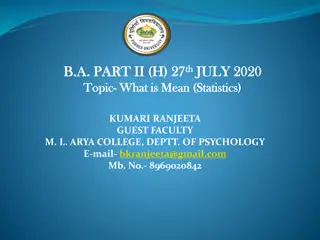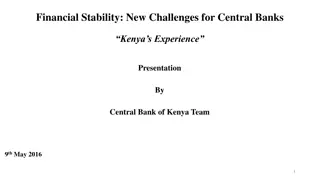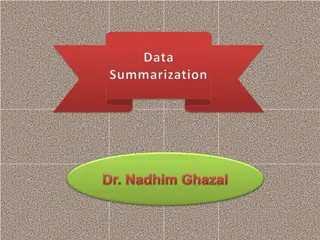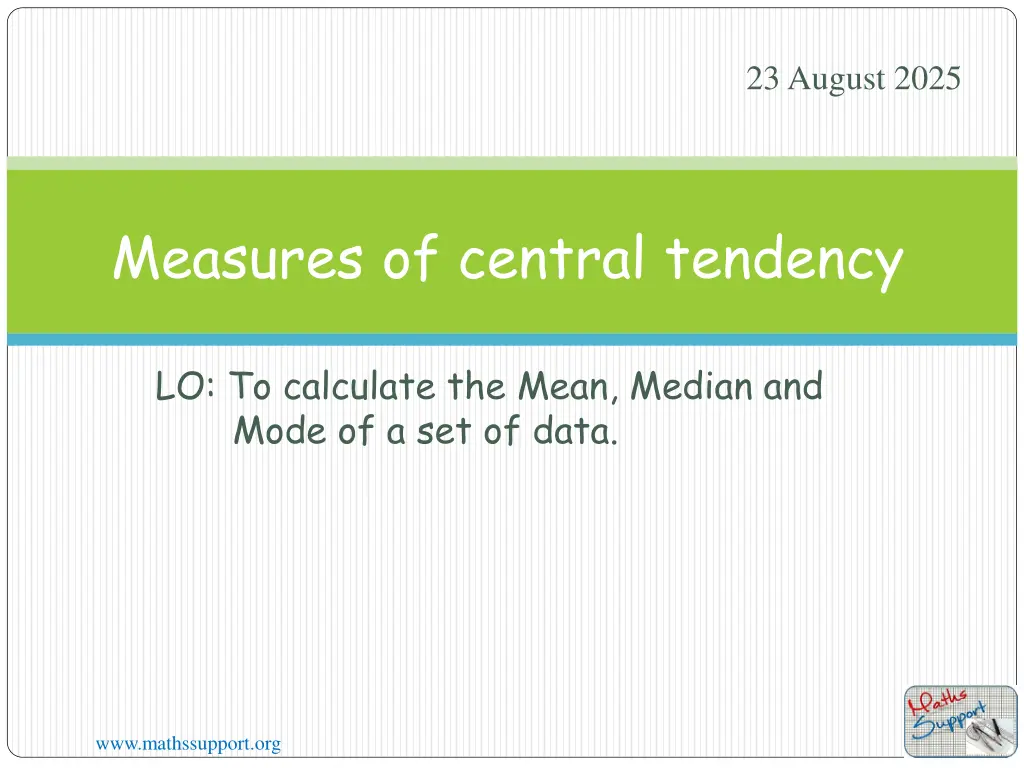
Understanding Measures of Central Tendency
"Learn how to calculate the mean, median, and mode of a data set, along with insights on outliers and modal values in various scenarios. Explore examples with practical applications to enhance your statistical knowledge."
Download Presentation

Please find below an Image/Link to download the presentation.
The content on the website is provided AS IS for your information and personal use only. It may not be sold, licensed, or shared on other websites without obtaining consent from the author. If you encounter any issues during the download, it is possible that the publisher has removed the file from their server.
You are allowed to download the files provided on this website for personal or commercial use, subject to the condition that they are used lawfully. All files are the property of their respective owners.
The content on the website is provided AS IS for your information and personal use only. It may not be sold, licensed, or shared on other websites without obtaining consent from the author.
E N D
Presentation Transcript
23 August 2025 Measures of central tendency LO: To calculate the Mean, Median and Mode of a set of data. www.mathssupport.org
Measuring the centre of data To have a better understanding of a data set we need to choose a single value to represent the data, usually this value is located in the middle of the set There are three statistics that are used to measure the centre of a data set middle value most common sum of values number of values They are called measure of central tendency. A measure of central tendency is a measure that tells us where the middle of a set of data lies. www.mathssupport.org
The mode The value that occurs most frequently in a set of data is called the mode. In a list of numbers the mode is the number that occurs most. For grouped numerical data, we talk about a modal class, which is the class that occurs most frequently. Is it possible to have more than one modal value? Yes If a set of scores has two modes we say it is bimodal. If there are more than two modes we do not use mode as a measure of the centre. Is it possible to have no modal value? Yes www.mathssupport.org
The mode These figures show the number of Year 12 pupils that hand in their weekly Maths homework every week this year. 14 13 15 14 15 11 13 16 12 14 14 15 15 9 0 10 11 12 Discuss : Over how many weeks were the results collected? What is the modal number of pupils attending? Are there any unusual results in the data set? Very unusual results are called outliers. Can you think of any possible reasons for the outlier in this data set? If the data set were very large, what would be the best way to find the mode? www.mathssupport.org
The mode If the data set were very large is better if the data is presented with a frequency table. This frequency table shows the shoe sizes of the year 12 class. When presented with a frequency table, the mode is the group with the greatest frequency. Shoe sizes Frequency Which size the store most commonly has to restock? 8 9 9 10 17 Find the modal shoe size. 10 11 10 The modal shoe size is 10 12 9 www.mathssupport.org
The mode If the data set is presented with a grouped frequency table where the data is presented in classes. The mode should be contained in the group that has the highest frequency. This table shows the ages of students who exercise in the gym after school. Age Frequency What is the modal age? (a, years) 13 < a 14 2 The modal age is 16 < a 17 14 < a 15 15 < a 16 6 8 You cannot tell which value within this group has the highest mode. 16 < a 17 10 17 < a 18 3 www.mathssupport.org
The mean The mean is the most commonly used average. To calculate the mean of a set of values we add together the values and divide by the total number of values. Sum of data values Number of data values Mean = We denote the mean for an entire population by , which we read as mu In many cases we do not have data for all the population, and so the exact value of is unknown. Instead we obtain data from a sample of the population and use the mean of the sample, x, as an approximation for n xi i=1 x1 + x2 + x3+ . + xn n The mean of the sample x = = n www.mathssupport.org
The mean Here are the best times in seconds for the 100 m sprint for five girls in a Year 10 class. Calculate the mean time for Class 10B girls 10B girls 15.3 12.8 14.7 15.4 15.4 n xi i=1 x = n 12.8 + 14.7 + 15.3 + 15.4 + 15.4 5 73.6 5 = = = 14.72 www.mathssupport.org
The mean If the data set is presented with a frequency table, How to calculate the mean? This frequency table shows the shoe sizes of the year 12 class. Calculate the mean. You can see that 9 people wear shoe size 8 if you are to add these 8 + 8 + 8 + 8 + 8 + 8 + 8 + 8 + 8 = 72 same as 8 x 9 To calculate the mean we need to multiply each single value (x) times its frequency (f) (f x) Shoe sizes (x) Frequency (f) x = f x (f ) 72 90 170 110 108 8 9 x = 9 10 17 10 x = 11 10 The mean of the shoe size is 10 12 9 (f x) = (f ) = 550 55 www.mathssupport.org
The mean If the data set is presented with a grouped frequency table where the data is presented in classes. To calculate the mean we have to assume that the data is equally spread out in each of the classes, and use the mid- interval value of each class as the representative value for that class. Because of this assumption, we can only find an estimate of the mean The ages of students who exercise in the gym after school are in the table. Age (a, years) 2 14.5 15.5 16.5 17.5 30 (f ) = (fm ) = (f m) f m Mid-interval value ( m ) Frequency ( f ) x = (f ) 27 13.5 13 < a 14 x = 14 < a 15 15 < a 16 6 8 87 124 165 70 473 x 16 < a 17 10 The mean of the ages is 15.8 correct to 3 sf 17 < a 18 4 www.mathssupport.org
The median The median is the middle data value when the data values are arranged in order of size. For an odd number of data, the media is one of the original data values. Calculate the median of this set of numbers. 6.26 6.28 6.30 6.39 5.38 4.54 10.59 6.35 7.01 Write the results in order 1 2 3 4 5 4 3 2 1 4.54 5.38 6.26 6.28 6.30 6.35 6.39 7.01 10.59 We count from the ends toward the center, the median is the value in the middle position And find the middle value: www.mathssupport.org
The median The median is the middle data value when the data values are arranged in order of size. For an even number of data, the median is the mean of the two middle values and may not be in the original set. Calculate the median of this set of numbers. 26 Write the results in order 28 30 39 38 54 59 35 41 47 1 2 3 4 5 5 4 3 2 1 26 28 30 35 38 39 41 47 54 59 the median is the We count from the ends toward the center, mean of the two values in the middle position =77 38 + 39 2 Median = = 38.5 2 www.mathssupport.org
The median n + 1 2 . The median is If there are n data values, find the data value th n + 1 ) 2 ( There are 100 numbers in a list. Where is the median? 101 2 = 50.5th number in the list (halfway between the 50th and the 51st). There are 37 numbers in a list. Where is the median? 38 2 = 19th number in the list. www.mathssupport.org
The median If the data set is presented with a grouped frequency table where the data is presented in classes. The median should be contained in the group that has the middle value. To calculate the median we are going to use this formula: L = n = Lower limit of the median class Total number of observations 35 60 16 ? 2 ? ? ??? = ? + cumulative frequency of the preceding class Frequency of the median class Class size c = f = h = 22 10 Age Cumulative Frequency 16 38 56 Frequency (a, years) [25, 35) 16 The median is 60+1 = 30.5 [35, 45) [45, 55) 22 18 2 To find the median class we calculate the cumulative frequency. [55, 65) 4 60 TOTAL 60 www.mathssupport.org
The median If the data set is presented with a grouped frequency table where the data is presented in classes. The median should be contained in the group that has the middle value. To calculate the median we are going to use this formula: L = n = Lower limit of the modal class Total number of observations 35 60 16 ? 2 ? ? ??? = ? + cumulative frequency of the preceding class Frequency of the median class Class size 35 22 c = f = h = 22 10 Age Cumulative Frequency 16 38 56 Frequency (a, years) +30.5 16 10 [25, 35) 16 Med = [35, 45) [45, 55) 22 18 41.6 Med [55, 65) 4 60 TOTAL 60 www.mathssupport.org
Percentiles Each of the 99 intermediate values of a random variable which divide a frequency distribution into 100 such groups.. To calculate any percentile we are going to use this formula: L = P = Lower limit of the Perc. class Number of the percentile 45 70 ?? 100 ? ? ???? = ? + 60 38 n = Total number of observations cumulative frequency of the preceding class Frequency of the percentile class Class size c = f = h = Calculate the 70th percentile 18 10 Age Cumulative Frequency 16 38 56 Frequency (a, years) The 70th percentile is 70 (60+1) [25, 35) = 42.7 16 100 [35, 45) [45, 55) 22 18 To find the percentile class we calculate the cumulative frequency. [55, 65) 4 60 TOTAL 60 www.mathssupport.org
The percentile Each of the 99 intermediate values of a random variable which divide a frequency distribution into 100 such groups.. To calculate any percentile we are going to use this formula: L = P = Lower limit of the modal class Number of the percentile 45 70 ?? 100 ? ? ???? = ? + 60 38 n = Total number of observations cumulative frequency of the preceding class Frequency of the percentile class Class size c = f = h = 18 10 Age Cumulative Frequency 16 38 56 Frequency (a, years) 45 +42.7 38 10 [25, 35) 16 Per = 18 [35, 45) [45, 55) 22 18 70thPerc 47.6 [55, 65) 4 60 TOTAL 60 www.mathssupport.org
Thank you for using resources from A close up of a cage Description automatically generated For more resources visit our website https://www.mathssupport.org If you have a special request, drop us an email info@mathssupport.org www.mathssupport.org


